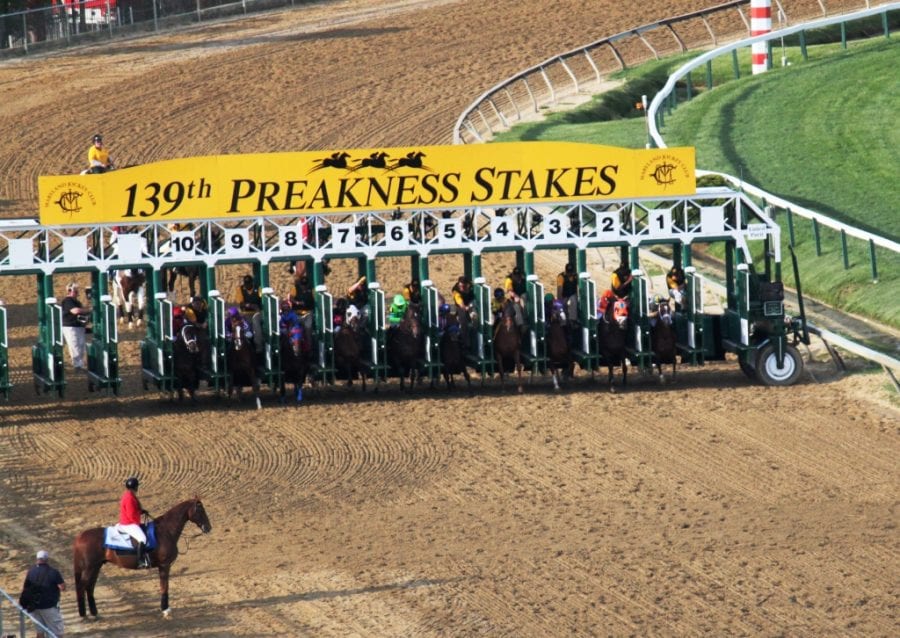From a Maryland Jockey Club release with additional reporting
At his annual post-Preakness media session this morning in the Pimlico winners’ circle, Maryland Jockey Club president Tom Chuckas addressed the potential of moving the date of the Preakness Stakes (G1). Last week, Chuckas told print reporters he wanted to change the spacing of the Triple Crown.
Beginning in 1969, the order of the Kentucky Derby (G1) on the first Saturday in May, followed by the Preakness two weeks later and the Belmont Stakes (G1) on the first Saturday in June has been in place. However, on eleven occasions the Preakness was run prior to the Derby and twice (1917 and 1922), both were on the same day. The Belmont has been contested before the Preakness eleven times. In 1968 and some years prior, the Belmont took place two weeks after the Preakness. Three of the 11 Triple Crown winners won the series under the current format.
“I respect tradition but I also think tradition cannot impede the growth or betterment of the industry,” Chuckas said. “When we get our most attention we tend to consolidate which is not beneficial to the Thoroughbred industry as a whole. People might say you will have to put an asterisk by the horse who wins the Triple Crown under these conditions. This schedule has changed often so the bottom line is you don’t have to put an asterisk. If you take a look at the NFL, NBA, MLB and NHL, all of them have gone through transformations with wild card additions and scheduling changes but do you really believe there should be an asterisk by the Seattle Seahawks because they won the Super Bowl under different conditions that the Green Bay Packers in Super Bowl 1? I don’t think so.”
Chuckas said he will work with officials at Churchill Downs and the New York Racing Association toward a schedule that has the Kentucky Derby retain its position on the first Saturday in May, while the Preakness would be moved to the first weekend in June and the Belmont Stakes to the first weekend in July.
“The philosophy of the trainers has drastically changed over the years,” added Chuckas. “It is hard for them to bring a horse back from the Derby in two weeks and run a horse three times in a five-week period. Most of them will not do it. But this idea is not just for the Triple Crown races. We have an obligation to the public to put our best racing on the table when the world is watching and we are not doing that. We could promote a Woodford-Dixie-Manhattan series for older turf stars and Triple Crown filly series with the Kentucky Oaks, Black-Eyed Susan and Acorn. All those things are possible but is going to demand a collaborative effort between the parties to make this happen.”
In a Preakness day meeting with reporters, Chuckas, specifically pointing to the possibility of series of turf and filly races, said, “If you can work collaboratively, I think you can do something very, very special.”
“If we don’t put the best product on the field,” he added, “we’re in trouble.”
Only three horses from the May 3 Kentucky Derby competed in Saturday’s Preakness. In 2013, six of the nine Preakness starters had also raced in the Derby. In 2012, six of 11 Preakness starters were Derby veterans; and the horses that ran one-two in the Derby reprised those performances in Baltimore.












